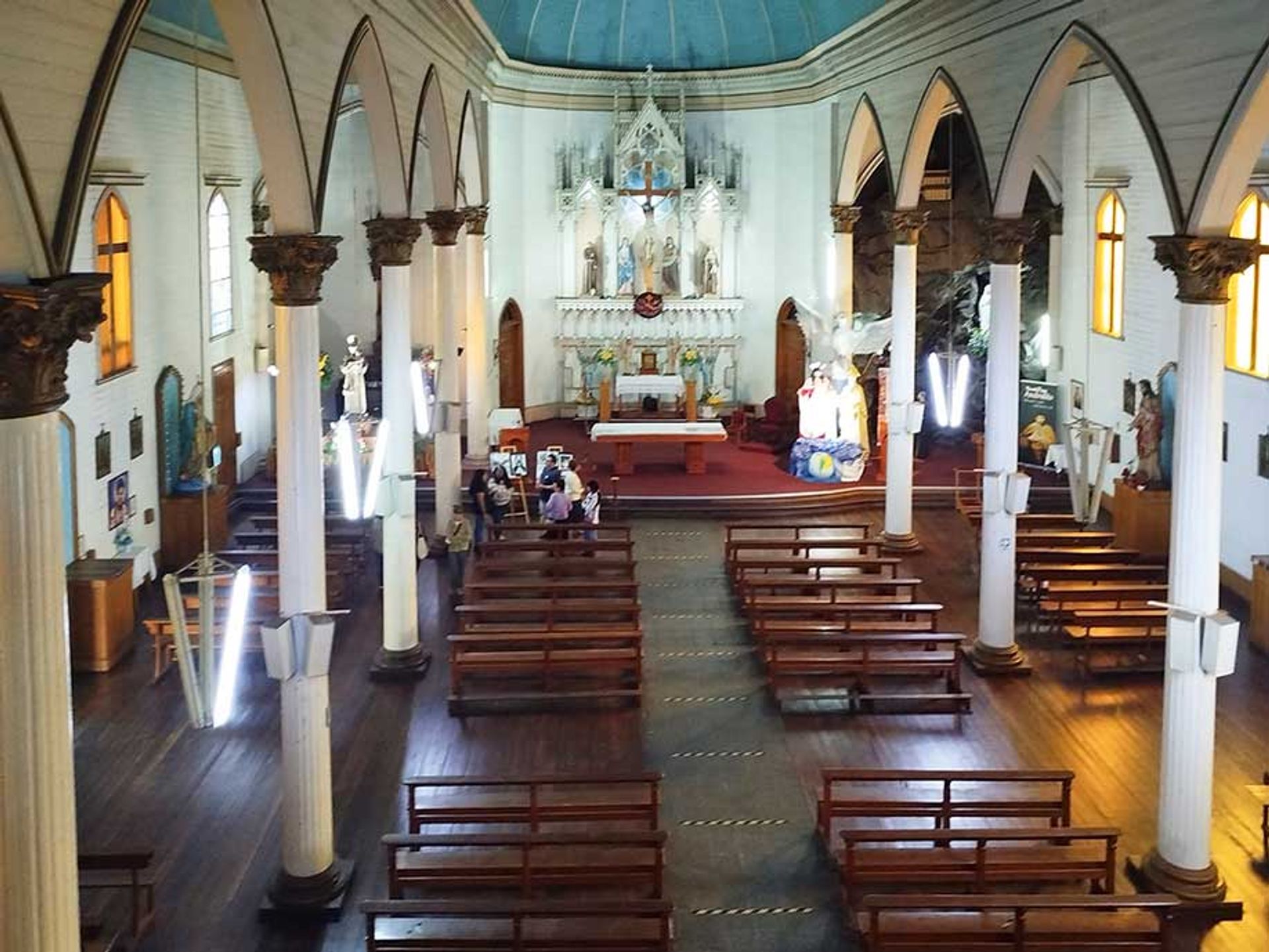Just two weeks before marking its 30th anniversary as a national historical monument, the 120-year-old San Antonio de Padua Church and Franciscan Convent was destroyed by fire, leaving the local community seeking answers—and solace in faith.
On the afternoon of 11 October, distraught onlookers watched as the church succumbed to the flames, marking the loss of a significant landmark in Iquique, Chile. Situated in the country’s northern region of Tarapacá, the church, often referred to as San Francisco Church—not to be confused with the San Francisco Church in Santiago, built in 1622 and the oldest Catholic church in the country—was a cornerstone of the community.
Due to the intensity of the flames, which reduced the historic structure to ashes in less than seven minutes, few items were salvaged. Aníbal Valenzuela, a sociologist and secular member of the Franciscan order in Iquique, served as a spokesperson following the fire. He told The Art Newspaper that the church housed reliquaries of both its namesake, Saint Anthony of Padua, and Saint Francis of Assisi; these are now lost. Some items were rescued, including parts of the sacristy and artefacts from the convent’s museum, along with two church bells—although they are now somewhat deformed. Fortunately, no one was killed in the blaze.
As for the cause of the fire, officials are still searching for answers, and the state prosecutor has opened an investigation. There is much public speculation about the events leading up to the incident; reports indicate that a small electrical fire had erupted the day before, leading to a power outage. The circumstances surrounding the subsequent flames are still unclear, but officials believe a malfunction in the electrical system may have contributed to the fire.
Franciscans in Chile
With its striking neo-Gothic architecture, the church—made entirely of wood and topped with two distinctive towers—was easily recognisable from various points in the city. Built between 1899 and 1904 by Franciscan missionaries from Lima, Peru, it was the first established Franciscan presence in Chile. The protected site also housed a long-standing convent, initially settled by Belgian friars who arrived by steamboat to Iquique in 1908. Continually active since that time, a small number of friars still lived on the premises as the fire took hold.

Reliquaries of Saint Anthony of Padua and Saint Francis of Assisi were lost in the fire, which consumed the wooden building in just seven minutes
Photo: courtesy San Antonio de Padua Church and Franciscan Convent
“San Antonio de Padua was a place where acts of solidarity turned into support for those in need,” says José Barraza Llerena, the regional director of the National Service of Cultural Heritage in Tarapacá. “It was deeply intertwined with the neighbourhood, where generations celebrated communions, baptisms, weddings and funerals.” He notes that the church offered guided tours on Chile’s annual Heritage Day, which were always popular.
Religion holds a strong presence in the region of Tarapacá. Its capital, Iquique, like many cities along Chile’s dusty northern coast, is historically home to miners and their families—a legacy of the saltpetre industry that founded the city and the copper mines that continue to sustain it. Its grid of streets, which clings onto the Pacific coast, brims with wooden Catholic churches.
These churches play a vital role in the region’s cultural heritage. Due to the scarcity of native trees in the arid, mountainous landscape, churches and houses in the region were historically made of imported Oregon pine. Tarapacá overall is rich in cultural heritage, including millennia-old geoglyphs—some of which were recently damaged by off-road vehicles in Alto Barranco, just south
of Iquique.
The long road to reconstruction
In the wake of the fire at the San Antonio de Padua Church, the local community faces a time of both anguish and hope. Just two weeks after the disaster, on 25 October, the parish marked the 30th anniversary of the church and convent’s inclusion in Chile’s National Monuments Council, where it was categorised as a Historic Monument. As for the road ahead, Valenzuela says: “Once we get past this moment of emergency, and we receive the necessary permissions, the church and convent will undoubtedly be rebuilt.”
Amid the grief, the parish experienced a small stroke of luck: detailed archaeological and architectural resources had been collected over the years for a planned restoration in development since 2018 and nearing the final stages of financing when the fire broke out. The archival material and funds sourced thus far will be invaluable for the parish and local government in their rebuilding efforts.
“As a community, we want the reconstruction to happen as quickly as possible,” Valenzuela says. “But we are not hopeful in terms of a quick process.” Thankfully, a parish hall located in a separate building still stands, providing a place of worship while the long road to reconstruction begins. Reflecting on how the parish finds solace during this difficult time, Valenzuela says: “With ever-increasing strength, we are seeking God.”


